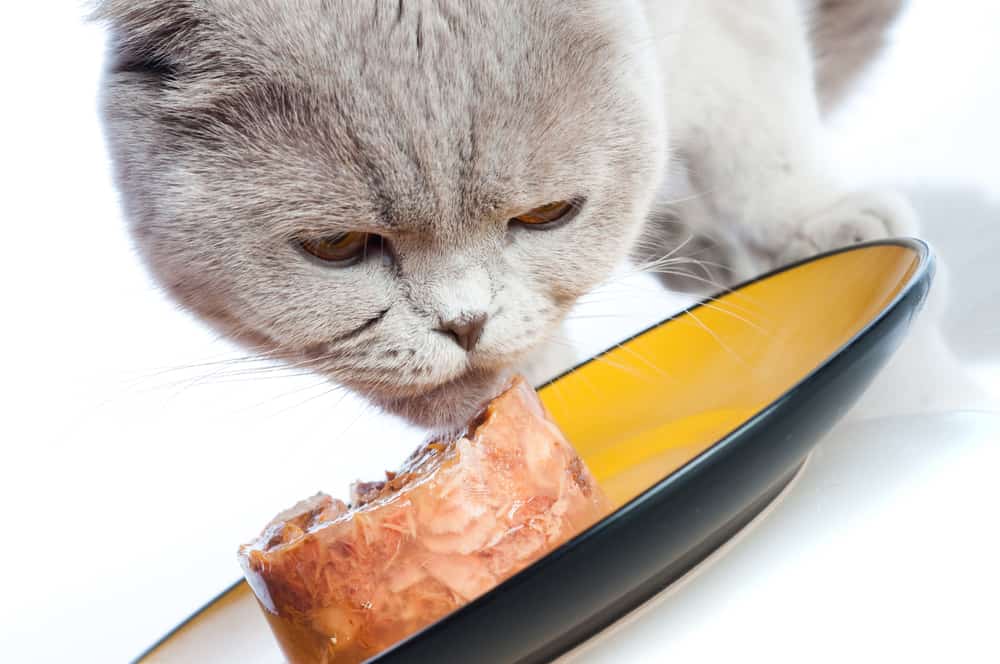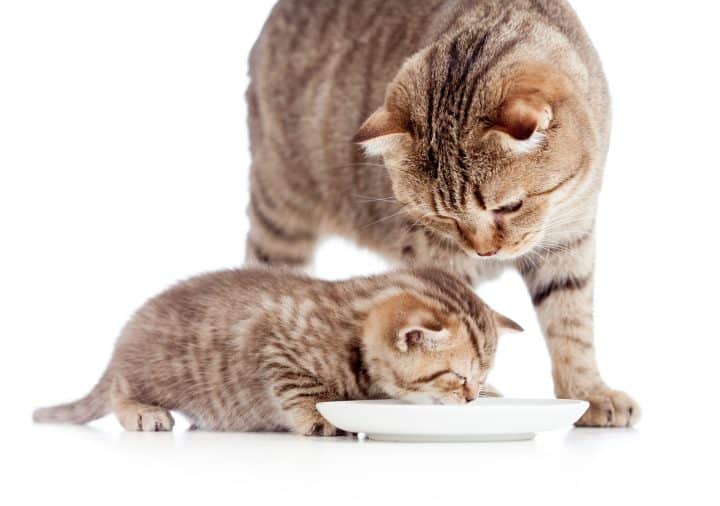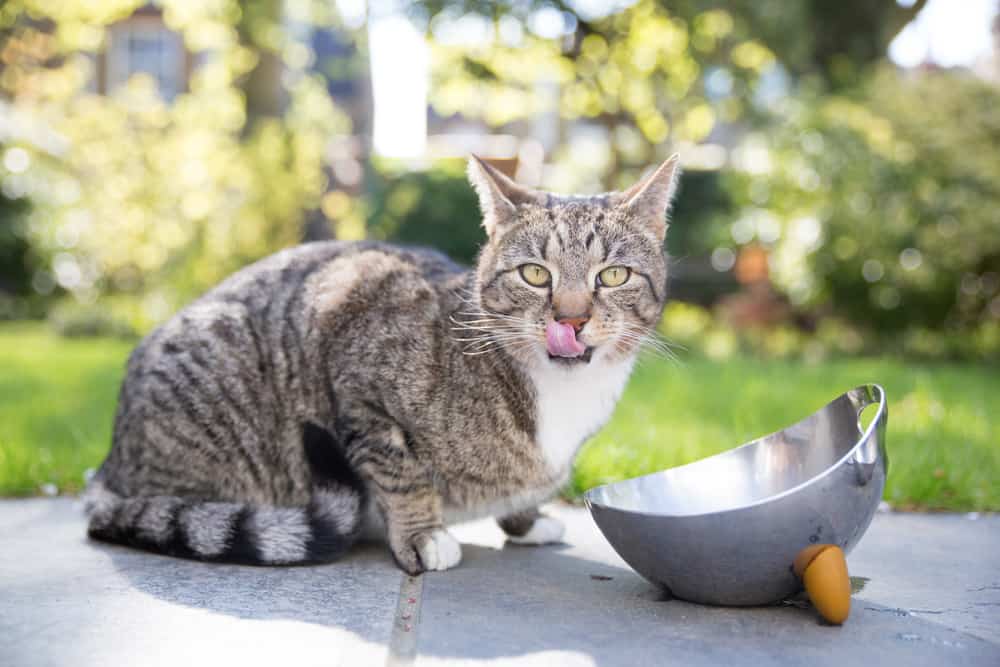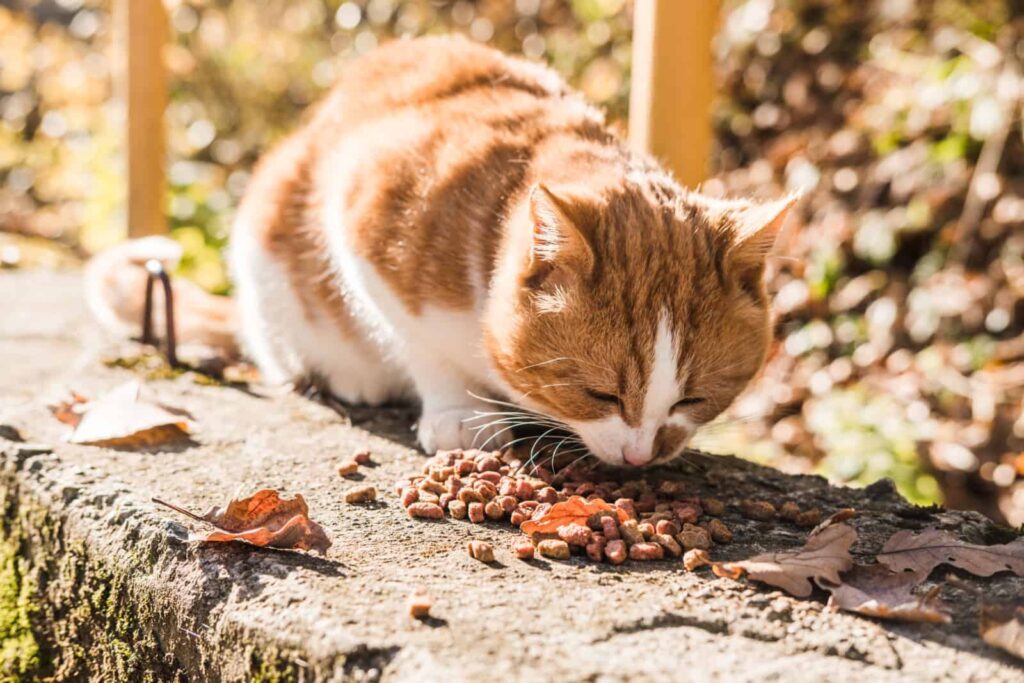Today we're reviewing seriously high-quality cat food with a bit of a silly name: Tiki Cat. For whatever reason, the branding of this cat food always led me to believe this was sort of a bottom of the barrel cat food but I couldn't have been more wrong!
Tiki Cat features great ingredients, high-protein, and extremely limited fillers. In fact, the Puka Puka Luau variety is one of the few foods on the market to be free of guar gum, xanthan gum, carrageenan, and montmorillonite clay which makes it a great options if you're looking to avoid fillers.
But before we go further, let's take a look at the overall ratings for the Tiki Cat brand:
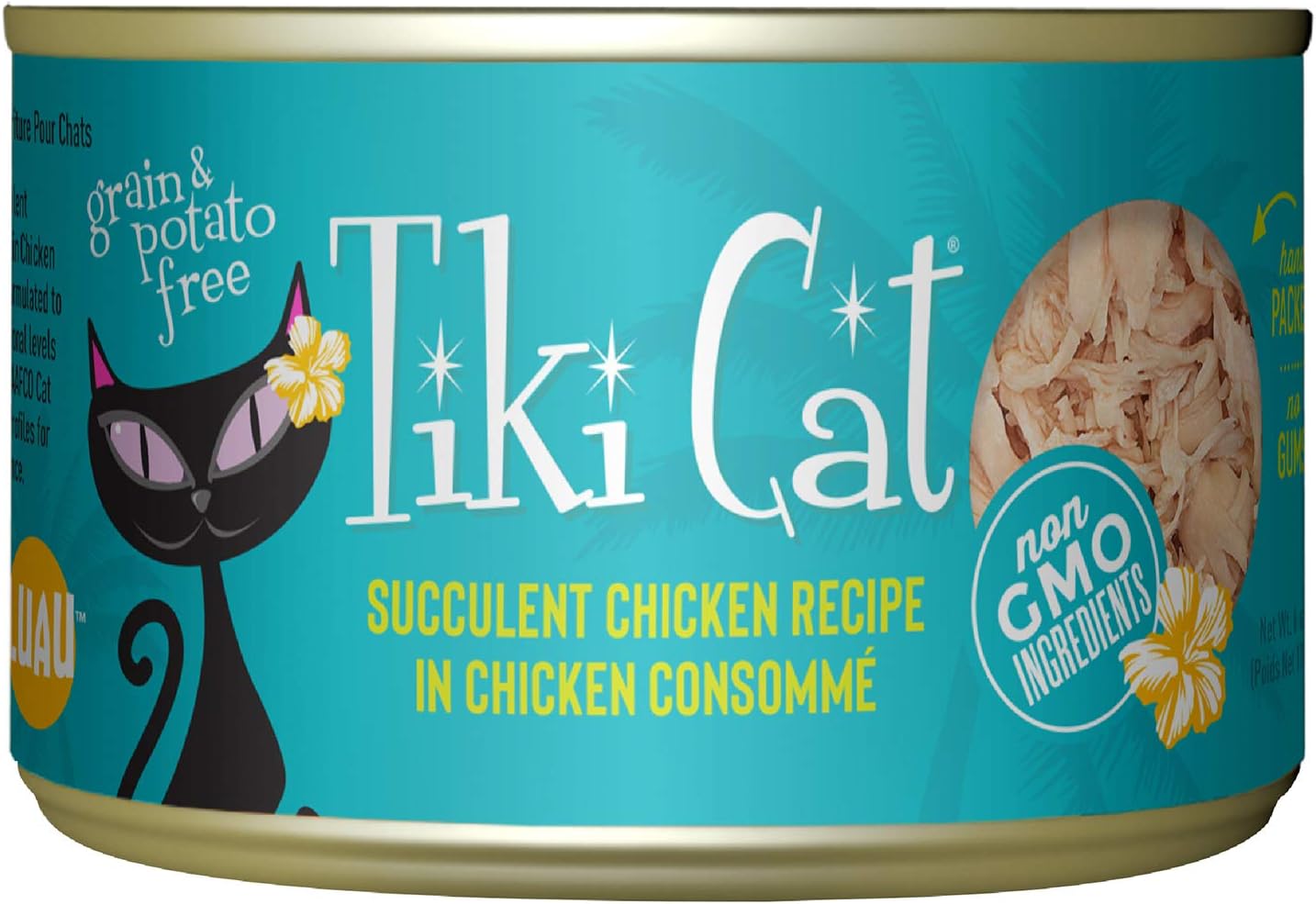
- High protein, no grains or potatoes
- Packed in high-moisture broth for hydration
- Non-GMO ingredients, no fillers or gums
- No artificial flavors, colors, or preservatives
I’ll be diving deep into each of these factors but let’s start by learning more about the history of the Tiki Cat brand. You can also skip ahead to any particular criteria using the table of contents below:
The Story Behind Tiki Cat
Tiki Cat originally started as Petropics and was founded by Christine Hackett and her husband in 2005. Christine had previously worked in research and development for PetCo and during that time decided that the pet food market needed a new kind of diet. That meant food that was more species-appropriate, with fewer gains and carbohydrates.
Christine is also a big fan of Polynesian culture which explains the tiki-style branding. When talking about her brand to the New York Times she explains that “We wanted the art, the cooking, the feel of vacation and the recipes were inspired by our own dining out.”
This mindset shows in the actual food which features large chunks of human-grade ingredients that are easy to identify. I actually found a video of Christine talking about her brand and having a couple of quick nibbles of one of her products just to show how that it's not all talk!
Product Variety – 7.5/10
Tiki Cat has a wide variety of flavors but their major focus is on fish and poultry combinations. The only issue I have is that their flavor names can be a little confusing. While it's pretty standard to add some branding to your line of food (Merrick's Backcountry line for example) with names like Puka Puka Luau, Koolina Luau and Napili Luau you can see how things might get a little confusing!
But it's only a minor issue and the actual proteins in the product are still clearly labeled. When it comes to proteins, Tiki Cat has some of the widest variety of seafood flavors I've ever seen including:
- Prawns
- Tuna
- Sardines
- Mackrel
- Crab
- Seabass
- Shrimp
- Hering
- Tilapia
- Lobster
I'm not aware of any other cat food that carries that kind of variety when it comes to seafood! They also have a nice variety of other protein sources including lamb, duck, and beef. Several flavors also feature single ingredients which is great if you're looking for a limited ingredient diet.
It's also worth mentioning that Tiki Cat foods don't have the same pâté or shred-style presentation. Instead, they use the word “consommé” to describe their food which is basically a more fancy way of saying soup. You can see a picture of this in the next section but it's important to note that some cats (and owners) might be a little surprised to see a soupy substance come out of the can.
Tiki Cat is also heavily geared toward wet food and while they claim to have more than 40 different flavor combinations, which is way more than most brands, they only have three flavors of dry food at the time of writing.
Overall, Tiki Cat gets a well deserved 7.5 out of 10 for product variety with a wide range of unique flavors and novel protein sources. However, the consommé style might not be what some cat owners are looking for, especially if they're used to the traditional pâté -style. And if you're looking for dry kibble, your options are going to be pretty limited.
Species Appropriateness – 8/10
When I say species-appropriate, I mean a diet that closely lines up with what your cat would actually eat in the wild. Cats are what's called obligate carnivores which means that they require meat in order to get all the necessary nutrients. In other words, your cat's wild ancestors weren't foraging for blueberries or hunting down grain; instead, they were hunting small game!
For a diet to be species-appropriate then it should focus on animal sources of protein and this is where Tiki Cat really shines. I mean, just take a look at the sardine cutlet recipe:

They're certainly not trying to make a diet that looks nice! Instead, they're focused on minimal processing and animal proteins which is why they score so high in species appropriateness.
Ingredient Quality – 8/10
With high scores in species-appropriateness come high scores in ingredient quality! It's a given that Tiki Cat avoids using ingredients like soy, corn, and wheat but they also do a great job of minimizing common thickening agents. That's part of why they made my list of the best cat food without carrageenan!
However, the list of ingredients can vary quite a bit between lines and some are certainly better than others so to really understand what's inside Tiki Cat recipes let's do a deep dive into three of the most popular recipes by reviewing the first several ingredients of each.
We'll start with one of the most popular Tiki Cat products:
Ingredients In Tiki Cat Puka Puka Luau Succulent Chicken in Chicken Consomme
1. Chicken
Chicken is an excellent first ingredient and what I love about Tiki Cat is that if you spend even a second looking at the food it's very clear that chicken is the main ingredient. The canned food looks more like a can of shredded chicken than your typical brown lump of cat food!
2. Chicken Broth
Broth is a typical ingredient for most wet or canned foods.
3. Sunflower Seed Oil
Healthy fats are a critical part of your cat's diet and I'd prefer to see an animal source of fat sunflower oils are still an acceptable ingredient.
4. Tricalcium Phosphate
Tricalcium phosphate is an anti-caking agent that also helps balance the overall pH of your cat's food. Tiki Cat uses this instead of the more traditional and common xanthan gum or guar gum.
5. Taurine
Taurine is an amino acid and an absolute requirement for your cat.
Complete Ingredients and Guaranteed Analysis
Here's the complete list of ingredients in the chicken recipe:
Chicken, Chicken Broth, Sunflower Seed Oil, Tricalcium Phosphate, Taurine, Choline Chloride, Potassium Chloride, Sodium Chloride, Magnesium Sulfate, Zinc Amino Acid Chelate, Iron Amino Acid Chelate, Vitamin E Supplement, Ascorbic Acid, Thiamine Mononitrate (Vitamin B1), Niacin (Vitamin B3), Manganese Amino Acid Chelate, Vitamin A Supplement, Copper Amino Acid Chelate, Calcium Iodate, Calcium Pantothenate, Sodium Selenite, Riboflavin Supplement (Vitamin B2), Vitamin B12 Supplement, Pyridoxine Hydrochloride (Vitamin B6), Folic Acid, Vitamin D3 Supplement, Biotin, Vitamin K3 Supplement.
Here's the guaranteed analysis:
- 16% Protein
- 2.6% Fat
- 0% Fiber
- 80% Moisture
And here's the guaranteed analysis by dry matter (with moisture removed):
- 80% Protein
- 13% Fat
- 0% Fiber
Puka Puka Luau Ingredient Summary
This recipe from Tiki Cat has some of the highest protein content you can find along with extremely low carbohydrate content. The ingredients are simple and consistent of only a core protein with the rest of the ingredients acting as nutritional supplements. Overall, it's great food with a premium ingredient list. You can check today's price on Amazon by clicking here.
Tiki Cat Bora Bora Grill Sardine Cutlets in Lobster Consomme Grain-Free Canned Cat Food
1. Sardines
Sardines are a great source of protein and fatty acids for your cat! Cat's also love fish and most cats are typically quite happy to eat some sardines!
2. Lobster Broth
While it's in the form of a broth, lobster is certainly a more unique ingredient for any cat food.
3. Sunflower Seed Oil
As noted in the Puka Puka Luau recipe, sunflower oil has it merits but I'd always prefer to see an animal source of fat rather than something plant-based.
4. Locust Bean Gum
Locust bean gum is used to thicken and stabilize cat foods but it's also an additive that some cat owners prefer to avoid. Locust bean gum (along with xanthan gum) given to rats over a two year period and no carcinogenic or other toxic effects were observed.
5. Xanthan Gum
Similar to locust bean gum, xanthan gum is used as part of the manufacturing process and is considered safe. Still, many cat owners would prefer to avoid additives at all costs and some have suggested that xanthan gum can stick to cat's teeth and cause increased dental disease.
6. Paprika
I wasn't sure about paprika and it's not an ingredient we commonly see so I reached out to Tiki Cat for more information. They got back to me within a few days and explained “We added paprika as a natural coloring but included at an insignificant level, in hopes of helping the visual appearance. This is only added to the diets containing sardines.”
7. Taurine
Taurine is a critical amino acid for cats that's found exclusively in animal proteins. This recipe includes added taurine as a supplement.
Complete Ingredients and Guaranteed Analysis
Here's the complete list of ingredients in the chicken recipe:
Sardines, Lobster Broth, Sunflower Seed Oil, Locust Bean Gum, Guar Gum, Choline Chloride, Xanthan Gum, Paprika, Taurine, Vitamin E Supplement, Zinc Sulfate, Iron Sulfate, Niacin (Vitamin B3), Thiamine Mononitrate (Vitamin B1), Calcium Pantothenate, Manganese Sulfate, Potassium Iodide, Vitamin A Supplement, Riboflavin Supplement (Vitamin B2), Pyridoxine Hydrochloride (Vitamin B6), Copper Sulfate, Folic Acid, Vitamin D3 Supplement, Vitamin B12 Supplement.
Here's the guaranteed analysis:
- 11% Protein
- 3% Fat
- 0% Fiber
- 83% Moisture
And here's the guaranteed analysis by dry matter (with moisture removed):
- 65% Protein
- 18% Fat
- 0% Fiber
Tiki Cat Bora Bora Ingredient Summary
You can see just how different the ingredients of this diet are compared to the Puka Puka variety. While it still has high protein and a focus on animal-based ingredients, this recipe features locust bean and xantham bean gums. While I don't think these are ingredients that have to be avoided at all costs, I do understand why you'd want to skip them, and the fact that some Tiki Cat recipes include them and others don't is a little confusing.
If you want to pick up the Bora Bora recipe, I recommend Amazon and you can check today's price by clicking here.
Ingredients In Tiki Cat Born Carnivore Chicken & Herring Grain-Free Dry Cat Food
1. Deboned Chicken
We always want to see an animal-based protein as the first ingredient and debonded chicken is a great start to this recipe. The Association of American Feed Control Officers (AAFCO) explains that named poultry like this is “the parts of the bird as you would find if you purchased a whole chicken or turkey at the grocery store” but that it also includes “of the less profitable parts of the bird, such as backs and necks.”
2. Chicken Meal
Meal is the ground up meat product after heat has been applied and water has been removed. In other words, it's a concentrated form of protein. While less processed meat is generally better, meals do add a lot of protein.
3. Herring
Herring is a fish that provides another species-appropriate protein source and a great source of healthy fats. It's also great to see another protein in the third ingredient that's not a meal.
4. Salmon Meal
Like the previous meal ingredients, this adds protein but not much else.
5. Herring Meal
Just like the other meal products on this list, herring meal is high in protein.
6. Dried Egg Product
Dried egg product is defined by the AAFCO as “dry egg, without the shell, that was processed at a USDA plant.” That means this another species-appropriate ingredient and animal protein source.
7. Peas
Peas are making their way into more and more recipes as the grain-free pet food movement continues to grow. Peas aren't species-appropriate and while they don't have the same impact that something like corn would they're still a carbohydrate. However, they also help keep the price of this cat food down and don't show up until ingredient 7.
8. Peas
Peas are making their way into more and more recipes as the grain-free pet food movement continues to grow. Peas aren't species-appropriate and while they don't have the same impact that something like corn would they're still a carbohydrate. However, they also help keep the price of this cat food down and don't show up until ingredient 7.
8. Tapioca
Another carbohydrate, tapioca is a starch that's extracted from the cassava plant. This starch is part of the manufacturing process for the kibble and helps the dry food maintain shape.
9- Natural Chicken Flavor
Natural chicken flavor, according to Chewy, is “incorporates Chicken Fat and other natural flavors to deliver a poultry taste.” Like most natural flavors, the overall nutritional impact is minor.
10- Brewers Dried Yeast
Brewers dried yeast acts as a supplement that adds protein and vitamin B to cat food.
Complete Ingredients and Guaranteed Analysis
Here's the complete list of ingredients in the chicken recipe:
Deboned Chicken, Chicken Meal, Herring, Salmon Meal, Herring Meal, Dried Egg Product, Peas, Tapioca, Natural Chicken Flavor, Brewers Dried Yeast, Chicken Fat (Preserved With Mixed Tocopherols And Citric Acid), Chickpeas, Ground Whole Flaxseed, Tomato Pomace, Calcium Sulfate, Inulin (Prebiotic), Vitamin E Supplement, Pumpkin, Salmon Oil, Taurine, Ferrous Sulfate, Zinc Sulfate, Niacin Supplement (Vitamin B3), Copper Sulfate, Vitamin A Supplement, Manganese Sulfate, Thiamine Mononitrate (Vitamin B1), D-Calcium Pantothenate, Pyridoxine Hydrochloride (Vitamin B6), Biotin, Riboflavin Supplement (Vitamin B2), Vitamin B12 Supplement, Vitamin D3 Supplement, Calcium Iodate, Folic Acid, Sodium Selenite, Rosemary Extract, Ascorbic Acid (Preservative), Citric Acid, Tannic Acid.
Here's the guaranteed analysis:
- 43% Protein
- 18% Fat
- 3.5% Fiber
- 10% Moisture
And here's the guaranteed analysis by dry matter (with moisture removed):
- 47.7% Protein
- 20% Fat
- 3.8% Fiber
Tiki Cat Born Carnivore Chicken & Herring Ingredient Summary
All 6 of the first ingredients are animal-based protein sources which instantly helps this food stand out as one of the better dry cat foods available. The Born Carnivore line from Tiki Cat also comes in at a reasonable price point. That makes it a great option for cat owners that want to feed a high-protein kibble without spending a fortune.
Price 7/10
Price is a difficult category to really pin down since so much it depends on the ingredient quality. For example, the Puka Puka Lua (chicken flavor) is most expensive than the Bora Bora (sardines flavor) and the price difference reflects the ingredient quality.
So in much the same way that ingredient quality can vary between recipe, you'll see a wide range of prices with Tiki Cat Products.
Overall, Tiki Cat has several budget friendly options that help cat owners pick up a quality product at a reasonable price. I don't think that Tiki Cat is trying to be the premium type of cat food. Instead, I get the impression that they want to beat out the Blue Buffalo's in the market by offering a high-quality product with some minor compromises. Or as Hackett put in her interview with the New York Times, “A lot of midline premium brands, which still have a lot of grain and carbohydrates in them, lost traction to companies like mine.”
Marketing and Message Match 8.5/10
Tiki Cat does a great job of matching their marketing with their actual product. Tiki Cat is one of only a handful of companies that directly acknowledges your cat's carnivorous roots as they explain on their FAQ Page “Cats are obligate carnivores and can only get nutrients from meat, unlike other animals which are able to synthesize nutrients from plant-based foods.”
I also love that the founder of the company is actually someone who worked in the pet food industry before. Unlike many pet food companies who enter the market solely from a business perspective, after watching interviews with Hackett, I feel like I can clearly see the passion for what she's doing.
It also helps that's willing to casually snack on her brand of cat food while being recorded.
Recall History 10/10
At the time of writing, Tiki Cat has never been recalled. With a perfect recall history and a company history spanning back to 2005 Tiki Cat easily earns a perfect 10 out of 10 for recall history!
Dry Vs Wet
Tiki Cat is heavily focused on wet food and only has three flavors of dry kibble in their Born Carnivore line. Tiki Cat explains that “We formulated a dry option, in a baked kibble, that delivers on the same high protein, low carbohydrate promise that we make with our wet diets.” In other words, their goal was to create a high-protein, low carbohydrate dry food and I'd say they accomplished that.
Part of what makes their dry food unique is that they bake it. Tiki Cat claims that this “allows us to include higher levels of fresh meat than extrusion, which is how most dry products are made.” They also claim that this allows for the Maillard effect to take place which improves the taste of the overall food. The Maillard effect is certainly established but it's hard to say for sure how much cats really care.
As for the wet food, I've already discussed that while there some variety across recipes Tiki Cat does focus on providing high protein diets. What makes their wet food unique is the consommé or soup style delivery.
Online Reviews Of Tiki Cat
I've spent hours digging around the internet to get a feel for what cat owners are saying about Tiki Cat products. That means searching through cat-related forums, blogs, and of course vendor websites. I've also looked at both wet and dry food varieties.
Tiki Cat Puka Puka Luau has the highest ratings compared to other recipes and product lines with hundreds of happy cat owners. This really shouldn't come as a surprise since we've already talked about how this simple recipe features quality ingredients with limited fillers at a reasonable price.
Overall, the vast majority of reviews of Tiki Cat are positive with the majority of negative reviews coming from cat owners with felines that refused to eat the food. However, I have yet to see a cat food that doesn't have a long list of these types of reviews and I feel that Tiki Cat has a normal amount of these kinds of reviews.
But let's dig a little deeper and start with what customers love about Tiki Cat:
What Customers Love
One of my favorite ways to get a feel for a lot of data is with a word cloud! It's a great visual way to see common trends and below you can see a word cloud for 100+ five-star reviews for the Puka Puka Luau cat food.

You can see that many cat owners are mentioning the shredded chicken which definitely makes this food stand out. While most cat foods show up in a brown chunk (aka a pâté) Tiki Cat foods actually look like food. You'll also notice the prominence of the words “love” and “loves” and there were many cats owners who were ecstatic about how much their cat loved the food!
Research is also kind of a surprising word in the cloud and many owners mentioned the amount of research they did before they end up going with Puka Puka Luau.
My favorite customer review (and winner of the best headline) has to be this one from Amazon.
What Customers Don't Like
As I've already mentioned, the main complaint from cat owners is that their cats didn't like the food. Check out this word cloud from one-star reviews:

You can see the prominence of words like “won't” and “doesn't”. You'll also notice that the word “changed” is prominent and that's a result of cat owners suggesting that the recipe has changed over time. This is another complaint that I see pretty often but I don't have any evidence that suggests the recipe has changed.
My Overall Rating 8/10
Tiki Cat can be an excellent cat food but it really does depend on the specific recipe you select. When it comes to wet food, the Puka Puka Luau is one of the best on the market with a simple, protein-focused recipe that minimizes fillers and preservatives. But other recipes, like the Bora Bora, are much closer to average. Not bad, but certainly not on the same level as the Puka Puka.
When it comes to dry food, the relatively new Born Carnivore line is a great option for budget-friendly high protein kibble.
But when you look at the best recipes that Tiki Cat has to offer, combined with a pile of positive reviews and a perfect recall history I believe Tiki Cat deserves a solid 8 out 10 rating. If you'd like to learn more and about Tiki Cat and check the latest prices you can click here to see their store on Amazon.
If you'd like to learn about a cat food that scored even higher, check out my review of Feline Natural.


